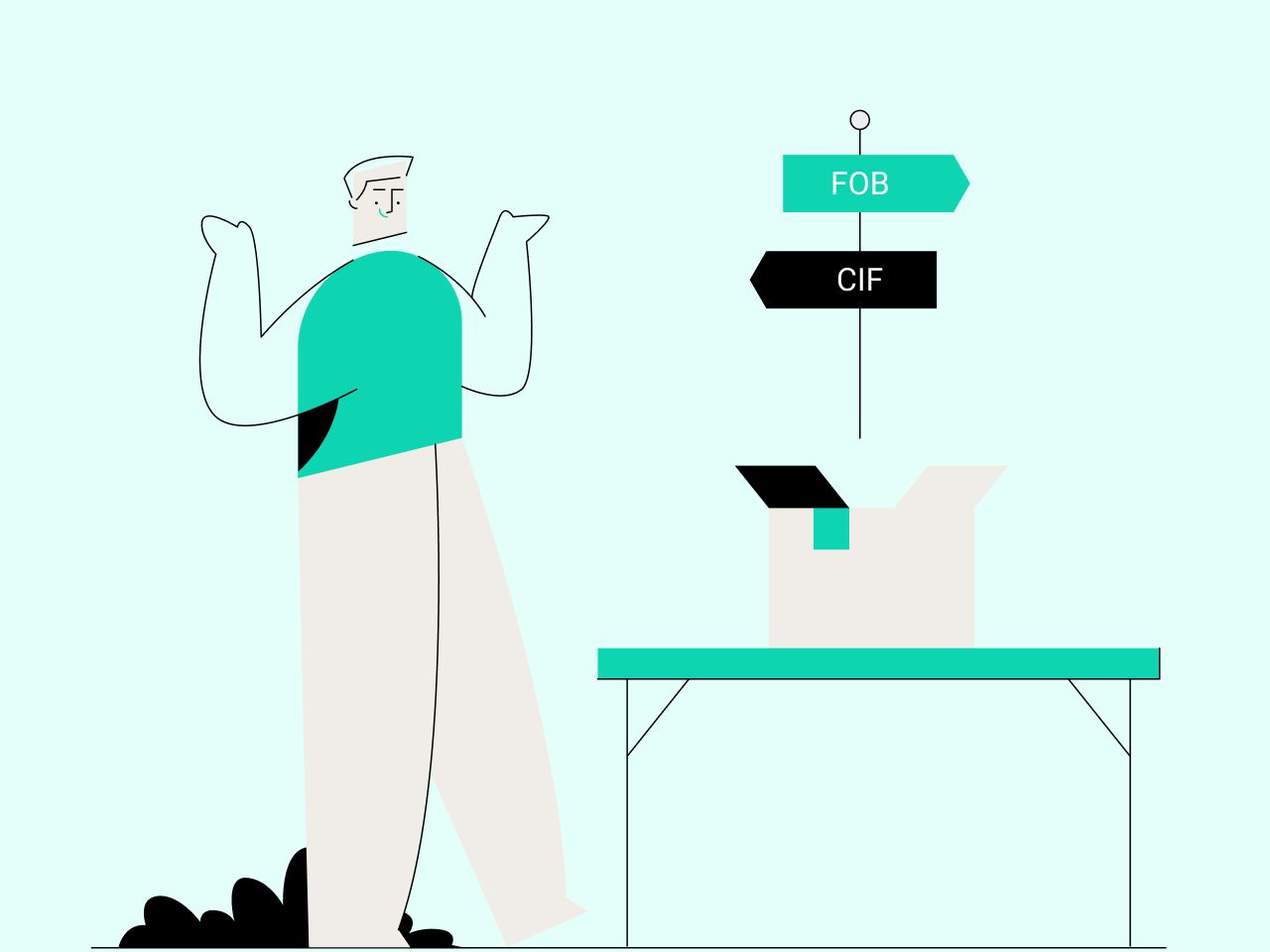Contents
When you buy materials or ship your manufactured garments across national boundaries, you and your supplier/factory must have a clear understanding of the Incoterms like CIF and FOB - two of the most commonly used shipping agreements.
Overview
In 1936 the International Chamber of Commerce established a number of Incoterms. The purpose was to easily identified contract models for international trade.
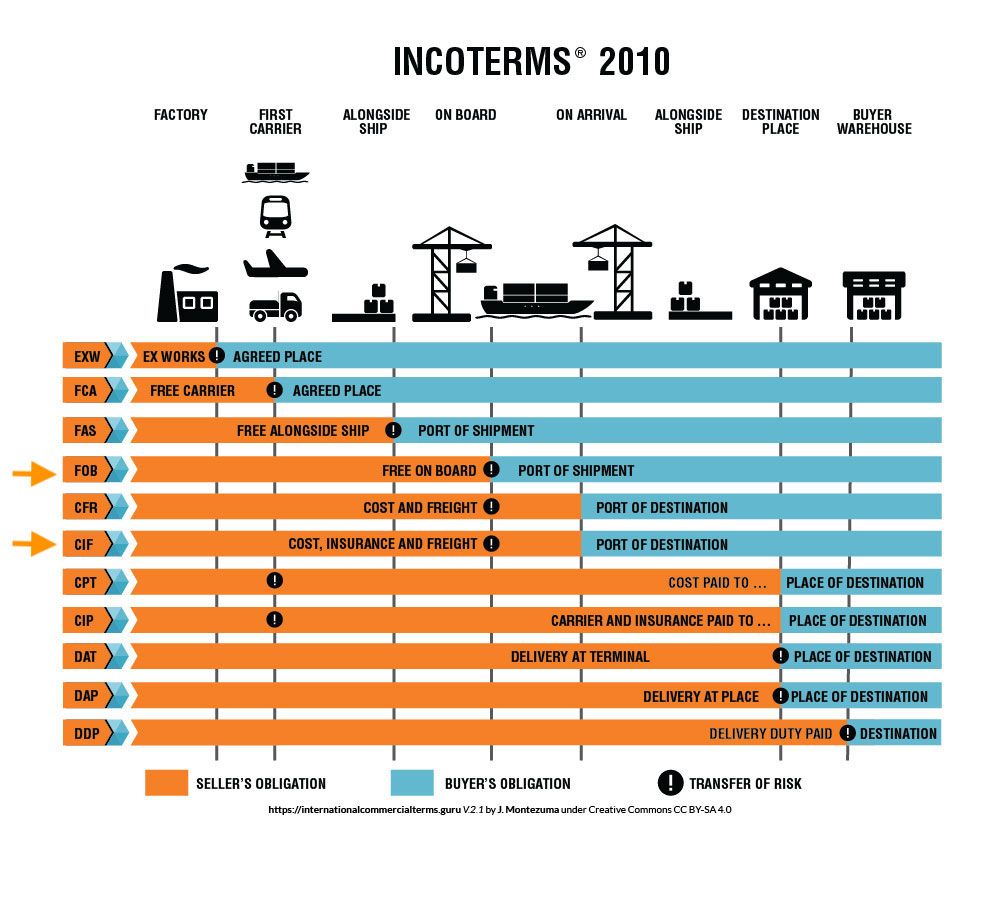
There are many shipping agreements that are used in apparel export/ import. In this article we will explain the difference between two widely used Incoterms - Cost, Insurance and Freight (CIF) and Free on Board (FOB).
Cost, Insurance, and Freight (CIF) and Free on Board (FOB) are international shipping agreements used in the transportation of goods between a buyer and a seller. Both contracts specify origin and destination information that is used to determine where liability (transfer of risk) officially begins and ends. Both apply to calculating the garment’s cost and the garment’s price. To the cost in terms of shipping from supplier to the manufacturer. To the price in terms of shipping from the manufacturer to the retailer (often retailers cover these expenses).
Key Differences
The biggest difference between FOB (Free on Board) and CIF (Cost, Insurance and Freight) agreements is the point at which responsibility and liability of goods transfer from seller to buyer.
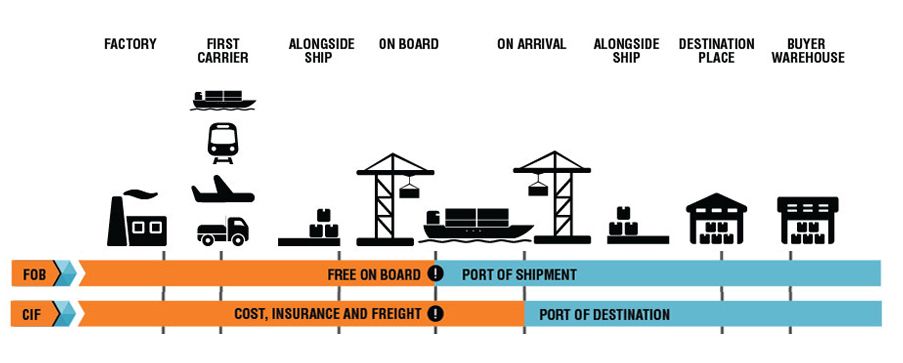
Each agreement has particular advantages and drawbacks for both parties. With FOB shipment, responsibility and liability transfer from seller to buyer when the shipment reaches the port or other facility designated as the point of origin. With CIF agreement, the seller pays costs and assumes liability until the goods reach the port of destination chosen by the buyer. CIF is considered a more expensive option when buying goods. Very often sellers prefer FOB and buyers prefer CIF.
What FOB means?
Free on Board (FOB) is the most commonly used shipping agreement in garment exporting. As the name indicates, the seller holds the responsibility of goods until it is loaded on board of the ship/aircraft nominated by the buyer. Responsibility shifts to the buyer once the cargo is on board the ship/aircraft.
How FOB Works?
Who pays the freight
Free on Board (FOB) is a term of sale under which the manufacturer quotes the price including all charges for placing goods on board of a ship or aircraft. It is also called freight. The seller also must clear goods for export.
For example, you are sourcing fabric internationally, the rate will include:
Original cost of fabric + delivery to sea/airport + uploading to ship/aircraft
If you are shipping your garments from manufacturer, the exporter quotes the price including:
Materials Cost + Cost of Making + Overhead Cost + Commission + Transportation Cost from Factory to Port
Seller’s responsibility ends when the goods are on board of the ship or aircraft. Seller is the responsible for the customs in the export country, buyer is responsible for customs in the import country. If anything happens to the goods past the ship’s rail that will be the buyer’s lost. The buyer pays for transportation (sea or air), insurance fees and unloading of goods from the port of destination.
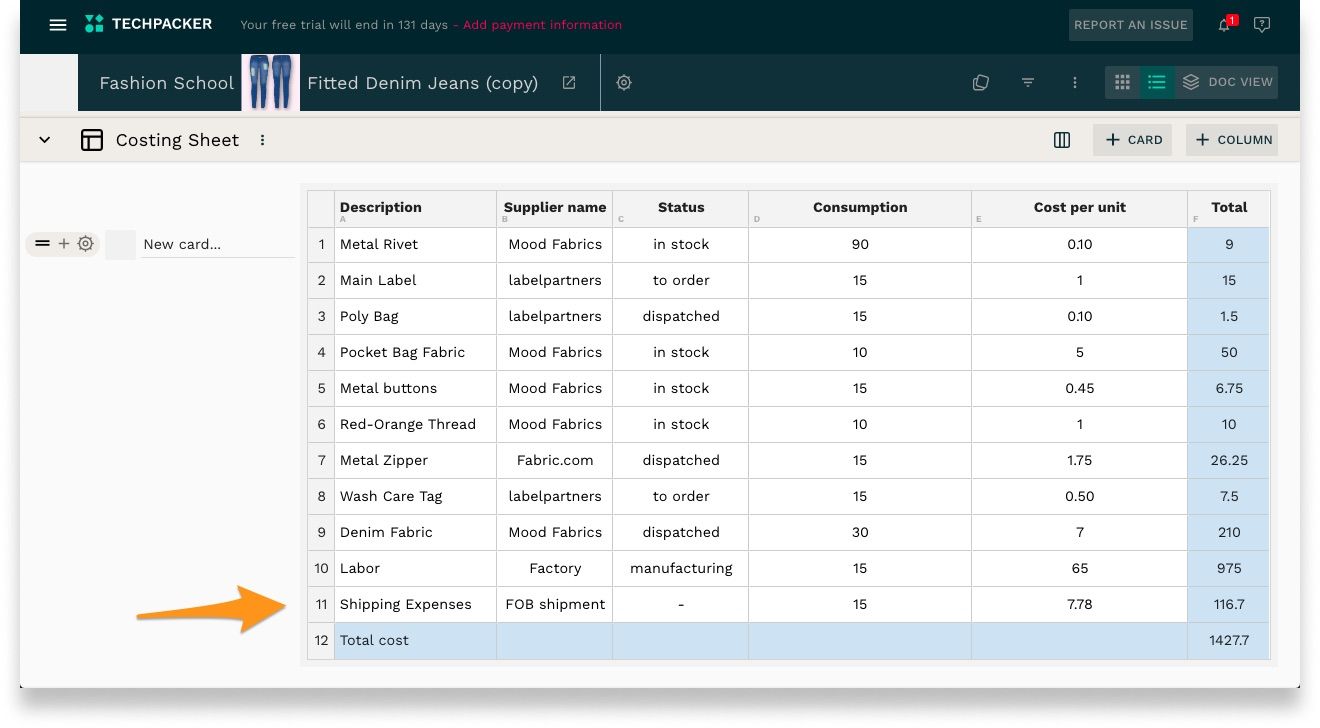
Benefits of FOB
There are two major benefits of buying FOB over CIF. With FOB you have better control of the freight and its cost. You also have a better chance of gaining a more competitive rate. You are in charge of choosing the logistic partner and you work together for your best interest, not your supplier’s. If any issues occur during the transit you will be also able to get timely information from your forwarder. This adds more transparency to the process. And gives you more control in organizing shipping methods, convenient insurance policy and setting the transit time.
Drawbacks of FOB
FOB is more suitable for experienced buyers because they have to deal with finding a carrier (ship or aircraft) and many shipping details that occur in the process.
What CIF means?
Cost, Insurance and Freight (CIF) is a shipping agreement under which the seller is responsible for the cost of the goods in transit, providing insurance with the buyer's name as the beneficiary. Risk passes to the buyer as soon as the cargo is on board of the ship/aircraft.
How CIF works?
Who pays the freight
Seller is responsible for paying freight charges to move goods to the destination of buyer’s choice. From the point of delivery at the destination, the buyer is responsible for unloading charges and shipping cost to a final destination.
With CIF agreement the seller uses a forwarder of their choice. If your manufacturer is shipping the garments to you, their price quote will include:
Materials Cost + Cost of Making + Overhead Cost + Delivery to sea/airport + Uploading to ship/aircraft + shipping fees + insurance
Under CIF contact the garment manufacturer is no longer responsible for goods when the ship/aircraft arrives at the country of final destination.
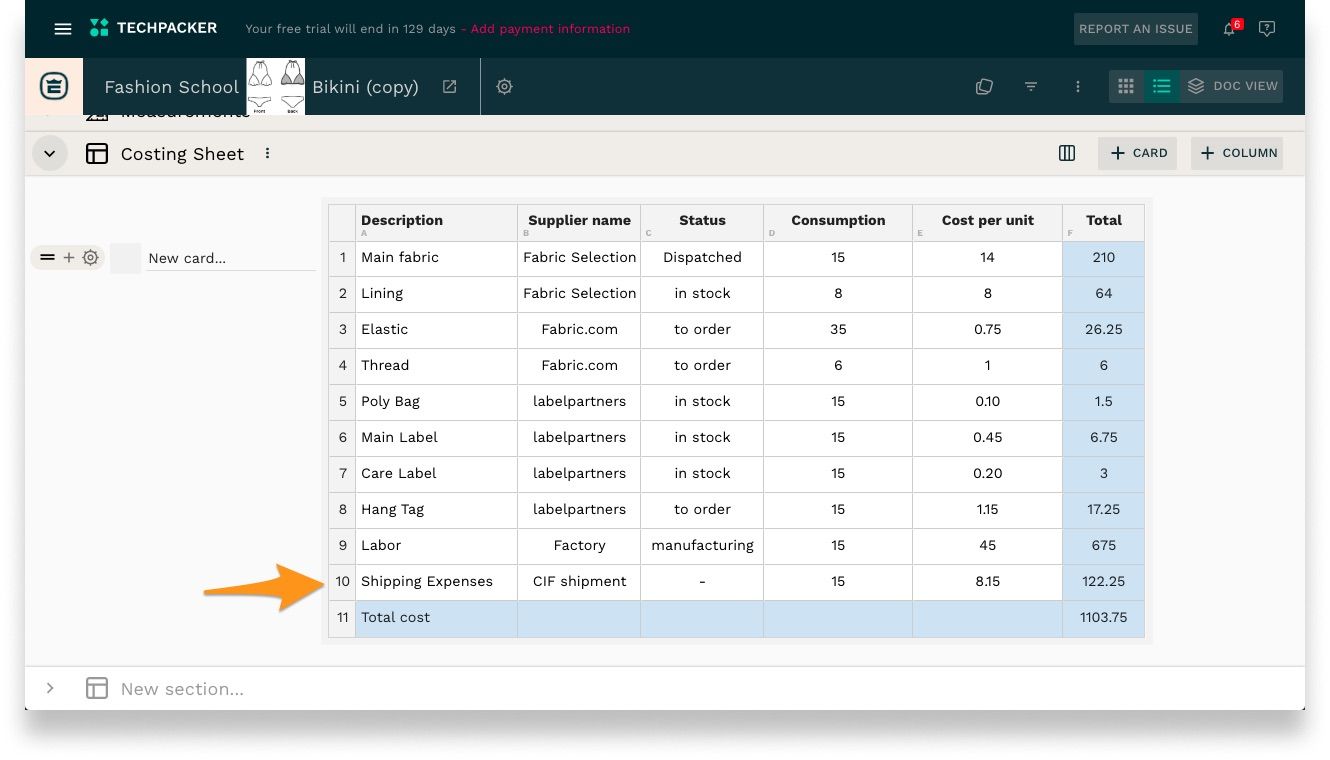
Benefits of CIF
Buyers that are new to international trade usually let their supplier deliver
the products. It helps avoid dealing with many unfamiliar and complicated shipping and freight details. Usually at a higher cost though. Since your supplier will be using a forwarder of their choice, you might be paying more to get your goods.
Drawbacks of CIF
There are some drawbacks for buyers with CIF contracts. For example, communication because they rely completely on people who are acting on behalf of the seller. Before the goods are cleared the buyer might still be responsible for paying additional fees like custom clearance.
When you start buying more internationally CIF terms might not work. Supplier’s responsibility ends in the destination port, therefore they might not help you in a timely manner if any problem occurs. Like handling service issues that can occur during transit. For example, unexpected shipping related costs or communication issues. Even a day of delay can be very costly.
Though CIF is a convenient option you might end up paying a fortune to import your garments or textiles. This is because the seller selects the forwarder of his choice. And sometimes even likely to mark up the forwarder’s charges to make a profit. When buying CIF you might also end up paying duty on the freight and insurance charges. You won’t have any control over the invoice as a buyer. With CIF many variables like shipping methods, transit times, insurance details and handling fees are controlled by the seller.
Add-on: Cut, make and Trim (CMT)
In the apparel industry, buyers sometimes only pay a fee to the factory for cutting, sewing, trimming and manufacturing of the garments. This is called CMT (Cut, Make and Trim). This happens when textiles demanded by the buyers are not available in the sourcing country. In this case these materials may be required to import. Usually, the buyer arranges the purchasing and shipping of the needed materials to the manufacturer.
To sum up
The cost of freight and duty depends on which country the products or materials are coming from. If you decide on a factory or supplier without knowing all the fees you will miscalculate the true cost in your Costing Sheet. So we suggest doing your research first!
|
Manage live costing sheets alongside other design assets. OR Log-in to your account now
Create beautiful products with your team, together. |


